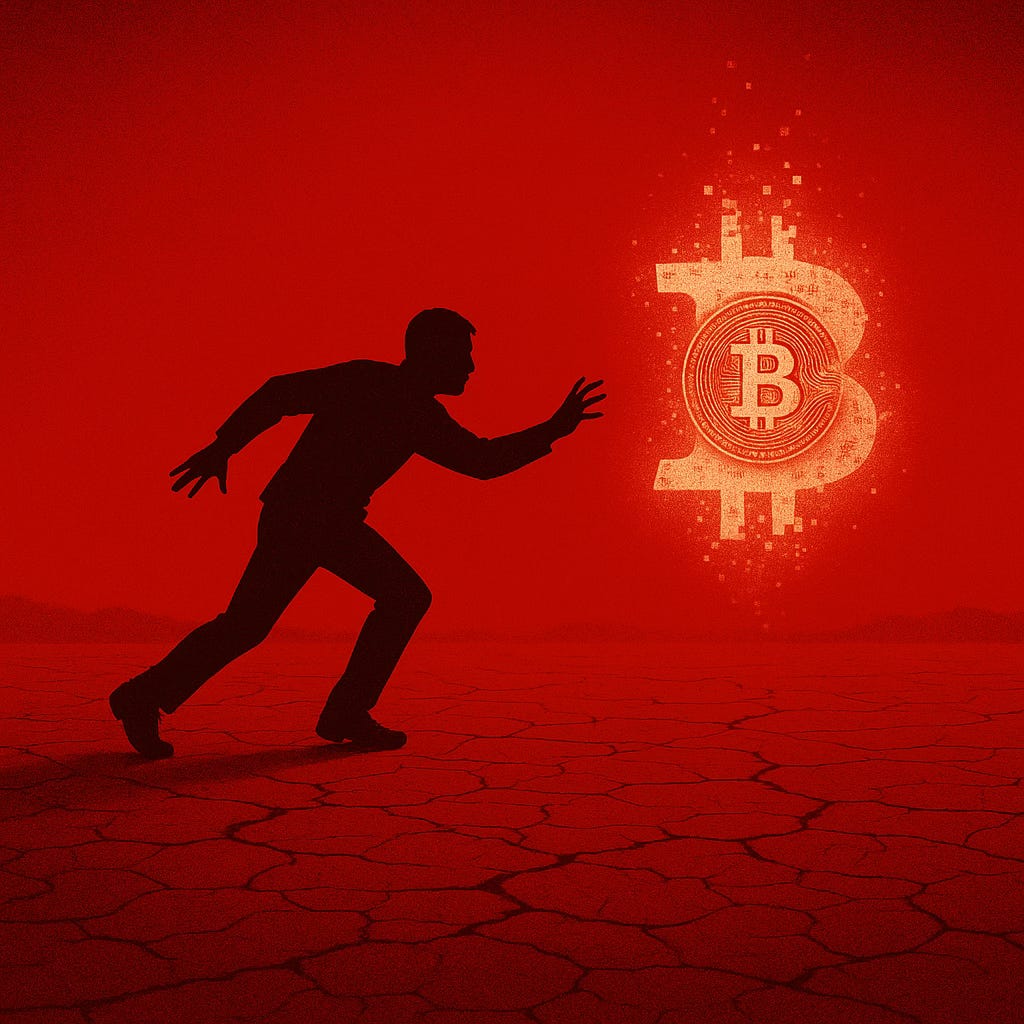In today’s fractured economic landscape, cryptocurrency has become a mirage for a generation of financially cornered individuals—those overworked, underpaid, and disillusioned with the real economy. Salaries often ensure nothing more than subsistence. Modest savings, when they exist, are vastly inadequate for life-changing investments like launching a business or acquiring property. Amid such hopelessness, crypto presents itself as a seductive promise: the dream of overnight wealth, bypassing years of toil. But that dream is an illusion, and for most, a trap.
Driven by economic despair, many see crypto as the only ladder out of a poverty trap in which traditional means—working, saving, and investing conservatively—seem hopelessly insufficient. The temptation is not merely speculative, but existential: the promise of reclaiming control over a life where the financial system has failed them. Yet this desperation fuels unmeasured risk-taking, as these late entrants to the crypto market chase yesterday’s profits made by early believers, oblivious to the structural difference in their timing and strategy.
The cryptocurrency ecosystem was indeed profitable—for pioneers who believed in blockchain when it was dismissed by the mainstream. These early investors accumulated gains not because of luck, but through conviction, patience, and understanding of a nascent market. By contrast, latecomers—often lured in by YouTube millionaires, TikTok traders, or peer envy—enter the market during euphoric highs. They are driven less by knowledge than by blind hope, and as such, they are prime prey for manipulation and volatility.
This volatility is not theoretical. It’s brutal and immediate. In April 2025, amid renewed trade tensions and unexpectedly low CPI figures, over $300 million was liquidated in 24 hours. Bitcoin, reacting to macro fears, dropped by over 20% in a week. Those who leveraged their positions in pursuit of rapid gain were wiped out instantly. In February, a similar crash erased $2.2 billion from the derivatives market in one blow. These are not isolated events—they are features, not bugs, of the system.
Such market violence reveals a bitter irony: those who turn to crypto as a way to escape financial fragility often find themselves more exposed and destabilized than ever before. Their entrance into the crypto space is not a calculated move but a psychological response to socioeconomic suffocation—a desperate exit from a system where effort is no longer perceived to yield fair reward.
Worse still, the structure of crypto trading platforms amplifies this instability. Leveraged products, instant liquidity, and algorithmic volatility create an environment where the smallest macroeconomic shock—like tariff hikes or CPI data—can result in cascading losses. The dream of fast profit becomes a nightmare of instantaneous ruin. Unlike traditional assets, which have buffers, regulators, and protections, the crypto world is ruthlessly unforgiving.
This is not to say that crypto is without value. On the contrary, it has revolutionized aspects of financial infrastructure. But it is not a safe haven for desperate individuals with no margin for error. It is a battlefield, and only those with experience, capital, and detachment survive. Hopeful newcomers, lacking all three, often mistake volatility for opportunity, and chaos for innovation.
The problem is compounded by the myth of exceptionalism—the belief that one is destined to be among the lucky few. This mindset, fueled by viral stories of crypto riches, erodes rationality. It encourages individuals to believe that mere participation guarantees success, ignoring the fact that markets reward preparation, not desire. In this light, crypto becomes a modern lottery, marketed with technical jargon and masquerading as democratized finance.
Thus, what begins as a rebellion against economic marginalization often ends in quiet capitulation. When the market turns, these investors are not just financially broken—they are emotionally exhausted and disillusioned. What was once framed as their only way out becomes yet another system that devours their optimism, confirming their initial powerlessness. Their fate is sealed not by bad luck, but by unchecked greed in a market they barely understood.
In the end, crypto’s trap is not only about money—it’s about narrative. It sells the illusion that wealth can be earned without foundation, that technology replaces discipline, and that volatility equals freedom. But in truth, it rewards the patient, punishes the desperate, and exposes the brutal cost of seeking salvation through shortcuts.

